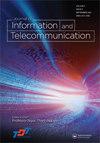用于黑色素瘤诊断的GoogLeNet改进版
IF 1.7
Q2 COMPUTER SCIENCE, INFORMATION SYSTEMS
Journal of Information and Telecommunication
Pub Date : 2021-03-10
DOI:10.1080/24751839.2021.1893495
引用次数: 9
摘要
摘要恶性黑色素瘤是导致75%以上皮肤病变死亡的原因,对患者进行鉴别诊断至关重要。为分析医学图像而开发的基于人工智能的决策支持系统正是解决这些问题的方法。近年来,各种深度学习算法已被开发用于此目的。在我们之前的研究中,我们在国际皮肤成像合作组织:黑色素瘤项目(ISIC)数据集上比较了AlexNet、GoogLeNet和ResNet-50在良恶性黑色素瘤鉴别诊断方面的性能。在这项研究中,我们通过修改GoogLeNet算法提出了一个CNN模型,并将该模型的性能与之前的结果进行了比较。在实验中,我们使用了从这个公共档案中获得的19373张良性和2197张恶性诊断的皮肤镜图像。我们根据八种不同的性能指标比较了性能结果,包括多边形面积指标(PAM)、分类准确度指标(CA)、敏感性指标(SE)、特异性指标(SP)、曲线下面积指标(AUC)、kappa指标(K)、F度量指标(FM)和时间复杂性指标(TC)。根据结果,我们提出的CNN获得了最佳的分类精度,为0.9309,并将GoogLeNet的时间复杂度从283降低 最小50至256 最小26 s本文章由计算机程序翻译,如有差异,请以英文原文为准。
A modified version of GoogLeNet for melanoma diagnosis
ABSTRACT Differential diagnosis of malignant melanoma, which is the cause of more than 75% of deaths amongst skin lesions, is vital for patients. Artificial intelligence-based decision support systems developed for the analysis of medical images are in the solution of such problems. In recent years, various deep learning algorithms have been developed to be used for this purpose. In our previous study, we compared the performances of AlexNet, GoogLeNet and ResNet-50 for the differential diagnosis of benign and malignant melanoma on International Skin Imaging Collaboration: Melanoma Project (ISIC) dataset. In this study, we proposed a CNN model by modifying the GoogLeNet algorithm and we compared the performance of this model with the previous results. For the experiments, we used 19,373 benign and 2197 malignant diagnosed dermoscopy images obtained from this public archive. We compared the performance results according to the eight different performance metrics including polygon area metric (PAM), classification accuracy (CA), sensitivity (SE), specificity (SP), area under curve (AUC), kappa (K), F measure metric (FM) and time complexity (TC) measures. According to the results, our proposed CNN achieved the best classification accuracy with 0.9309 and decreased the time complexity of GoogLeNet from 283 min 50 to 256 min 26 s.
求助全文
通过发布文献求助,成功后即可免费获取论文全文。
去求助
来源期刊
CiteScore
7.50
自引率
0.00%
发文量
18
审稿时长
27 weeks

 求助内容:
求助内容: 应助结果提醒方式:
应助结果提醒方式:


